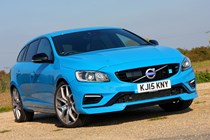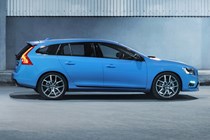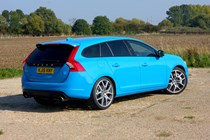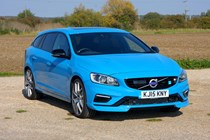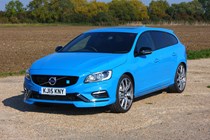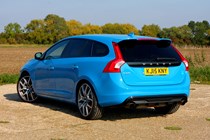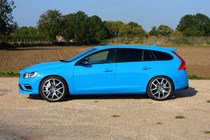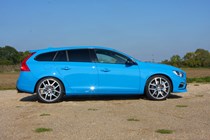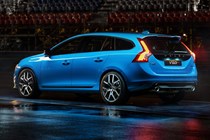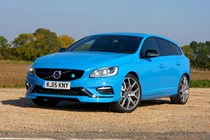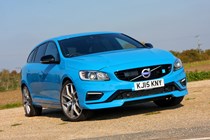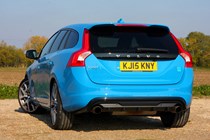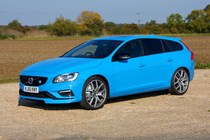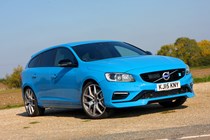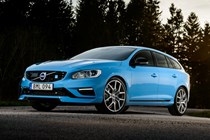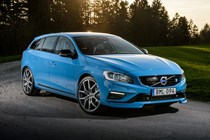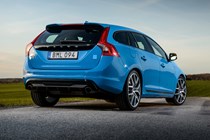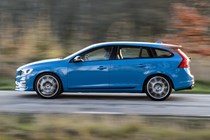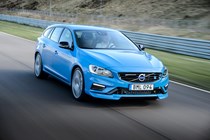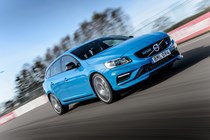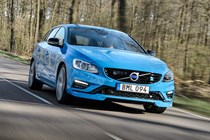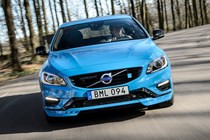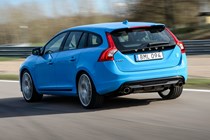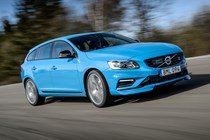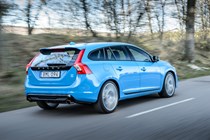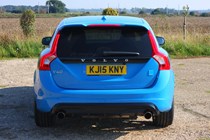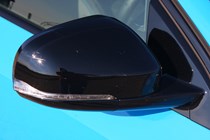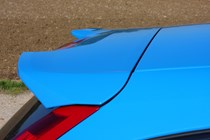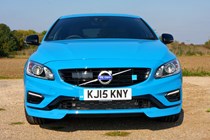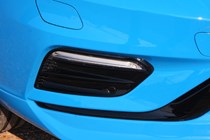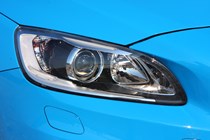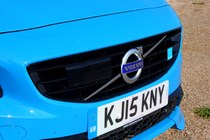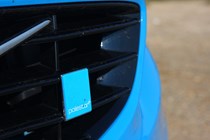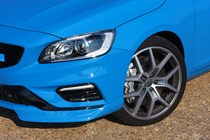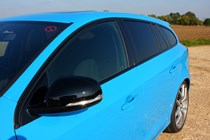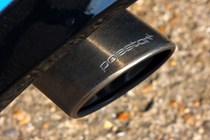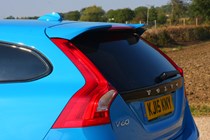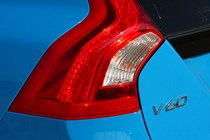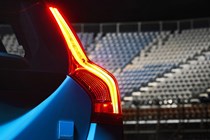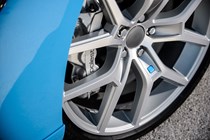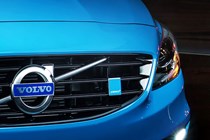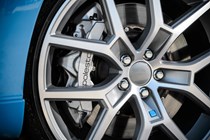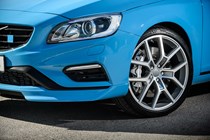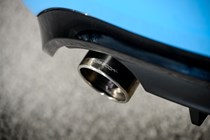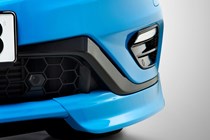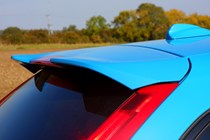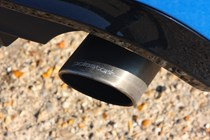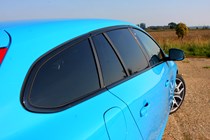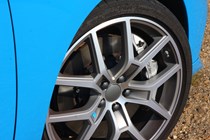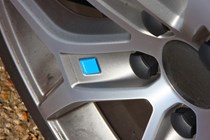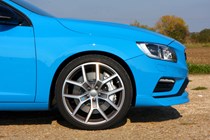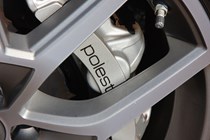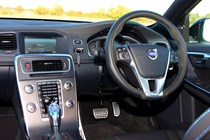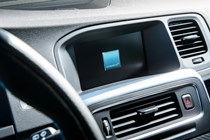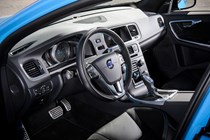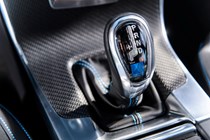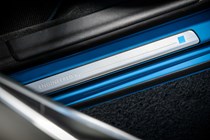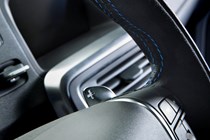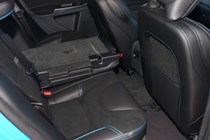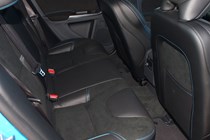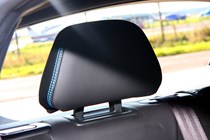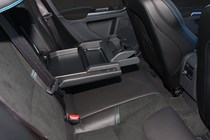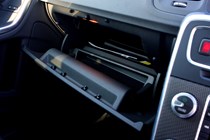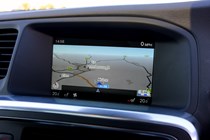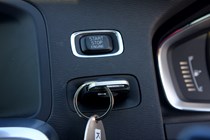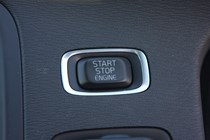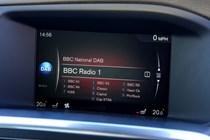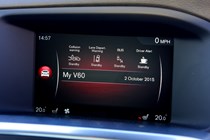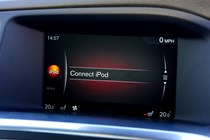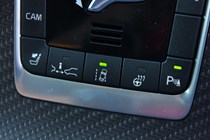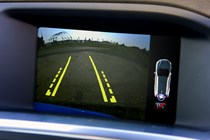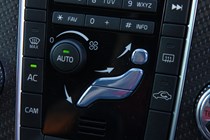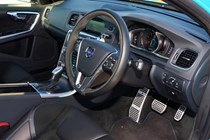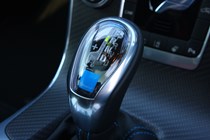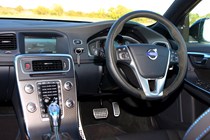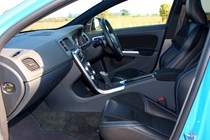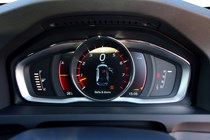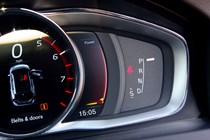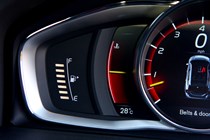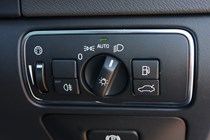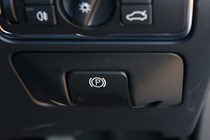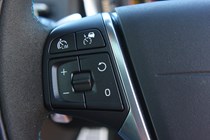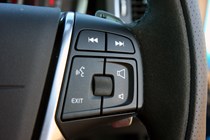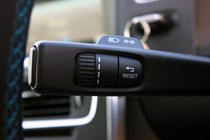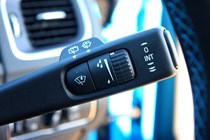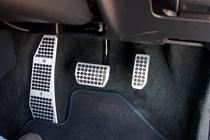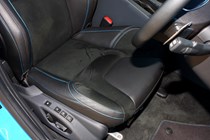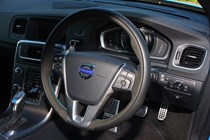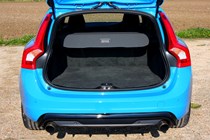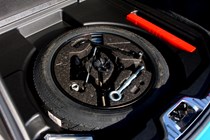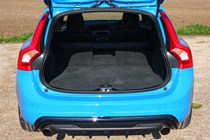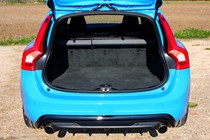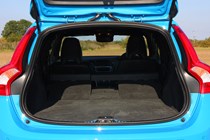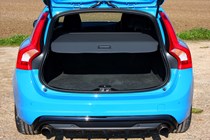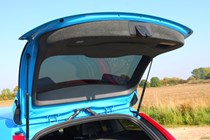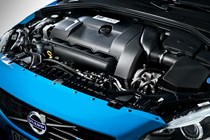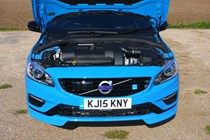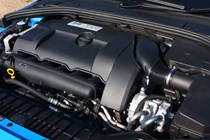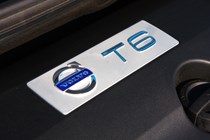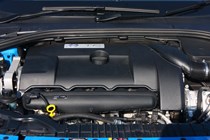
Volvo V60 Polestar engines, drive and performance
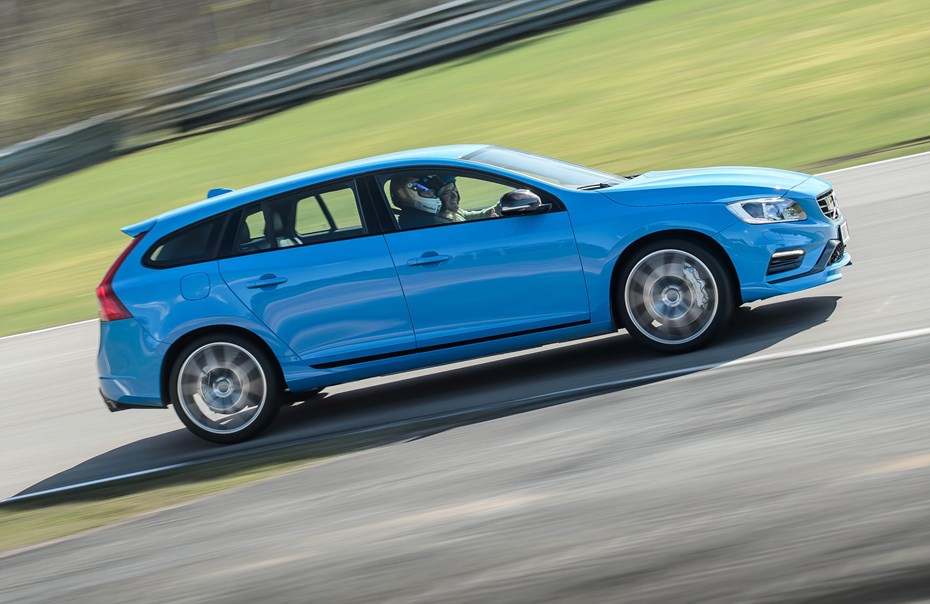
This is a Volvo estate with launch control; that means the engineers really have taken the issue of Volvo V60 Polestar performance seriously. A press of the brake and throttle simultaneously holds the engine revs at around 3,000rpm and optimises grip off the line for maximum attack. Do it right – it only lasts for five seconds so don’t be too tardy in releasing the left pedal – and this lifestyle load-lugger can sprint from 0-62mph in five seconds.
Admittedly there’s not much drama off the line, thanks mostly to the excellent four-wheel drive system, but at least the engine provides some aural fascination on the move. If you like your engines old-school, then the series of induction, turbo spool and flutter under full-throttle will please any inner child. The 2.5-inch diameter active exhaust system – with dual 3.5-inch tailpipes – only adds to the assault on the ears, though the bassy idle never screams so loud as to frighten children or small animals passing by.
Polestar’s engineers have increased power on the T6 petrol engine from 299bhp to 345bhp by adding a new twin-scroll turbo and larger intercooler, which also helps achieve the headline 500Nm of torque – available from 3,000rpm. Certainly it feels as quick as all the on-paper figures would suggest, though never in the realms of it’s German rival’s M or AMG badged cars. Think Audi S4 or BMW 335i though and you’ll be on the money.
One thing the Polestar V60 misses out on is a manual, or even fast-shifting dual-clutch automatic, gearbox, instead making do with the firm’s familiar six-speed automatic which is in truth a little old-hat now. The race team has had its hands on it though, re-writing some of the software for faster and more decisive shifts, which has worked but not performed miracles.
At least in manual mode, operated via the steering wheel-mounted paddles, the box is exactly that; with no kickdown available unless the engine revs drop far enough to warrant a stall. If only the paddles felt a little more mechanical than switch-like, lacking the tactility of certain rival systems.
The main crux of the way the Volvo V60 Polestar handles is its expensive racing-derived Ohlins adjustable dampers, and springs that are 80 percent firmer than those found on the T6 the Polestar is based on. Add to that 15 percent stiffer anti-roll bars, new connecting mounts and bushes, and you have a seriously focused setup.
On a billiard-table-smooth race circuit, or even a glass-flat Swedish road, it all works well; responses are sharp and considering this car’s near two-tonne kerbweight it offers almost exemplary body control.
However on a typically frost-bitten and pockmarked British B-road they simply don’t. To be completely fair the damping is well judged, quickly settling in one movement after being upset, but the springs are too stiff. At low speed the ride is harsh, and even minor surface changes like white lines (especially those with cats-eyes) can be clearly felt from the driver’s – and passengers’ – seats. Unfortunately only one spring rate is offered across all markets, and while the dampers offer a series of twenty adjustments (with cars being delivered in the safe middle-ground) backing their responses off won’t make the right difference here.
We’re not convinced the V60 Polestar is likely to take part in many track days either, as despite the super-grippy 20-inch Michelin Pilot Supersport tyres, excellent four-wheel drive system and six-piston front brakes it’s clear its sheer mass will soon get the better of it.
That said the Swedish firm (that’s Volvo not Polestar) are billing this estate as a car that can be used 365 days a year, whatever the weather, and in that department the firm has nailed its objective. The steering can be altered – while stationary – between comfort, medium and sport – though the middle-ground felt the best to us, with neither of the other options offering any more feel.
According to the Polestar engineers the best way to drive the V60 Polestar is with the ESC system disabled, which sends more power to the rear wheels (it can transfer up to 100 percent) for a more engaging drive. It’s never going to rival a BMW M-car or Mercedes AMG for tail-sliding antics, but it does at least make the front end feel a little sharper, and there’s no doubting the grip offered by the chassis set up – certainly more than enough for the road.


